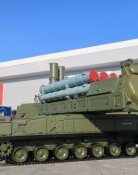[Opinion] Injecting Public Funds Is Not Everything
[Opinion] Injecting Public Funds Is Not Everything
Posted November. 03, 2001 09:30,
During the latter half of the 1980s into the 1990s, the U.S. economy ran a twin deficit in both the commercial and financial sectors and gave rise to skepticism that `America Does Not Exist`. Those who were involved in manufacturing industries appealed to the commercial sector and customs department to protect American manufacturers.
The policy was persuasive because the burden of the cost borne by individual citizens was very light. For instance, if a steel producer who lost the competitive edge needed 2 billion dollars to maintain 20, 000 jobs, the burden on individual citizens came out to be the equivalent of 10, 000 won. However, this kind of solution ended up only increasing the people`s burden. Ultimately, by the early 90s, manufacturers which could not regenerate themselves were weeded out by structural adjustments and replaced by IT and other service industries which brought the U.S. back on its feet.
On January 30, 1998, the Korean government injected 3 trillion won into Korea First Bank and Seoul Bank which faced a financial crisis and were overcome by insolvent credits. The reasoning was that protecting the two banks would save jobs and cost 70, 000 per individual citizen. However, after three years, the public funds injected into the banks and businesses total 140 trillion won and cost 12,000,000 won per family. On top of this, the government is planning to put in an additional 40 trillion won this year. It is time that we reexamine the progress of the structural changes made through public funds and look at its problematic points.
First, despite the public funds, the competitive strength of Korean businesses remains weak. According to analyses by consulting firms, 60 percent of the top 239 businesses show capital flows that do not even match the cost of procuring their supplies. Furthermore, investigations conducted by outside organizations report that over 50 percent of the 189 businesses listed in the stock exchange are in critical condition. Continuing economic decline and falling export rate are expected to increase insolvency problems for businesses. Consequently, we have reached a point where we have to reexamine the reasoning behind structural adjustments for protecting critical businesses. In this process, we will have to confront the cold reality that businesses without competitive strength will die out even with public funds, and we will have to search out a new engine for economic growth.
Second, we need to look at the effectiveness of the public funds. There are many indications that the organizations which received large scale public assistance have not made any real improvements as a result. Of course, there must be mutual compact between public investment or financial organization`s capital aid and the businesses in order for improvements to take place. However, it is hard to find cases where the parties successfully reached a compact or the conditions have been consistently rectified. As a result, a mechanism is necessary which can provide cooperative and realistic conditions for both parties to execute the given plan.
Finally, the most problematic aspect of structural adjustments reviewed here is, I think, its `amateurism`. Most recently, we saw a case where a participant in foreign sale negotiations mindlessly publicized information which jeopardized the negotiation process and another case where a system established for structural adjustment became a hotbed for illegal financial technology. Participants should acknowledge the trial and error of structural adjustment in the past three years, learn from the mistakes, and recruit the help of experts in solving the remaining problems. It is time for the people to display a modest but mature `professionalism` to the rest of us.
Park Sung-Joon (Boston Consulting Group, Seoul Office, Director)
Headline News
- Ukraine says N. Korea’s first troops arrive in Kursk
- N. Korea begins installing barriers on Donghae Line after 'bombing show'
- K-defense operating profit expected to jump by 200% in Q3
- Seoul City launches DDP rooftop tours, celebrating 10th anniversary
- Ahn Jung-geun’s historic writings return to Korea in 15 years







